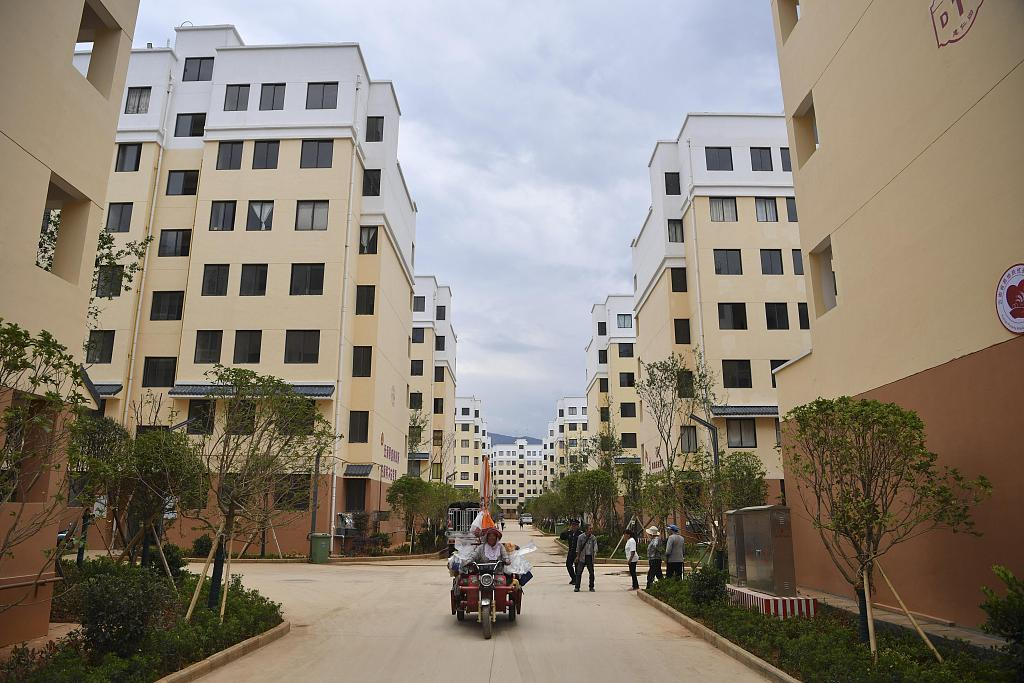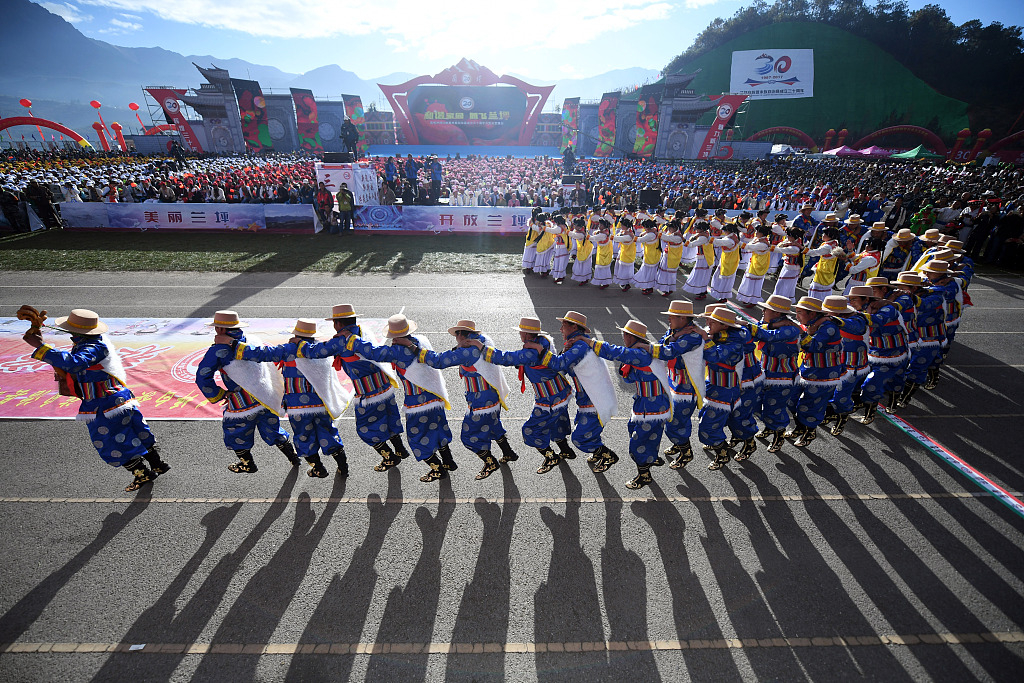

China aims to eliminate poverty in the country by 2020. The government's targeted poverty alleviation measures in Lanping County in southwest China's Yunnan Province are a testament to how this will be done.
Deep in the southwestern mountainous region, resided mainly by the Bai and Pumi minorities, Lanping has been known as the most impoverished county in China. In Wumapu Village on the county's outskirts, signs of extreme poverty are hard to miss: shabby houses are falling apart; children have dirt on their faces and holes in their clothes.
The village is built on a steep terrain with 95 percent of its farmland unsuitable for agriculture. With an impoverishment rate of 92 percent and almost no source of income, life in Wumapu seems hopeless.
But it is precisely the kind of left-behind areas the Chinese government's targeted poverty alleviation work is focused on. And thanks to the local poverty alleviation program, Wumapu residents' lives are about to change.
A targeted approach is needed to address poverty in hard-to-reach areas, said Xu Jin, a professor at the China Institute for South-South Cooperation in Agriculture at China Agricultural University.
The first step is getting the villagers out. Yu Sanhua, an elderly villager from Wumapu, will be resettled in a nearby town in two months.
In Tu'e, where Yu's new home is under construction, new apartment buildings are rising one after another to house the incoming relocated population. The resettlement site is concrete evidence of the government's effort to raise the villagers' living conditions.
"Taking a bath was rare in our village, and now it's easy," said Hu Yan, a relocated villager. Sitting in her spacious living room, she beamed: "We can enjoy the new houses provided by the state without spending a cent."
Across Lanping, the government plans to relocate a total of 44,000 people by 2022. Nationwide, 8.7 million impoverished people had been relocated as of the end of 2018.

A resettlement community for relocated residents from impoverished villages in Huize County, Yunnan Province, June 4, 2019. /VCG Photo
Relocation is only the beginning. How to sustain the people's well-being in the long term is a bigger question.
The next step is poverty elimination. The Chinese government sees industrial development as the key to achieving this goal.
One way to do this is by connecting businesses to workers. A new program called "10,000 Enterprises Helping 10,000 Villages" encourages companies to set up factories that provide jobs for relocated residents.
"The government will help a poor village, a poor county to develop a certain kind of special industry that's suitable for this local area," Xu said.
Lanping residents have benefited from China's e-commerce boom by selling produce online, while allowing the logistics industry to utilize the local labor force.
The 295 online shops in Lanping have indirectly helped more than 3,800 households increase their income. The county's success in e-commerce-assisted poverty alleviation sets an example for similar initiatives elsewhere in the country.
According to Lanping County's Poverty Alleviation Office, between 2013 and 2019, industry-assisted poverty alleviation projects saw 247 businesses and co-ops collaborating with farmers and 53,205 impoverished individuals becoming employed.

People celebrate the 30th anniversary of Lanping Bai and Pumi Autonomous County in Yunnan Province, November 27, 2017. /VCG Photo
However, the industry-based poverty alleviation measures can only provide relief for the current generation. For future generations, experts believe education has a major role to play.
"If you increase the number of years that people get mandatory education by three, the rate of the incidence of poverty will drop by seven percent," said Hannah Ryder, former head of policy and partnerships at the UN Development Program in China.
Offering good education to children in impoverished areas is vital to prevent poverty from being passed down from one generation to the next. In recent years, the Chinese government has continued to strengthen its investment in education in impoverished rural and ethnic minority regions. The country has basically accomplished the goal of zero dropout rate due to family financial difficulties.
"This (education-based poverty alleviation) is a huge project for China," said He Jintao, an English teacher at Lanping No.1 Middle School.
As part of an educational assistance program, He came to teach in Lanping along with six others, all from Zhuhai, to help narrow the gap in education resources between the affluent coastal and poor rural regions. "I want to give my students the wings to fly so they can create a hopeful future," he said.
In addition to relocation, industry- and education-based measures, Lanping County has also been working on health and ecological-based poverty alleviation measures to achieve an all-round success.

Copyright © 2018 CGTN. Beijing ICP prepared NO.16065310-3
Copyright © 2018 CGTN. Beijing ICP prepared NO.16065310-3